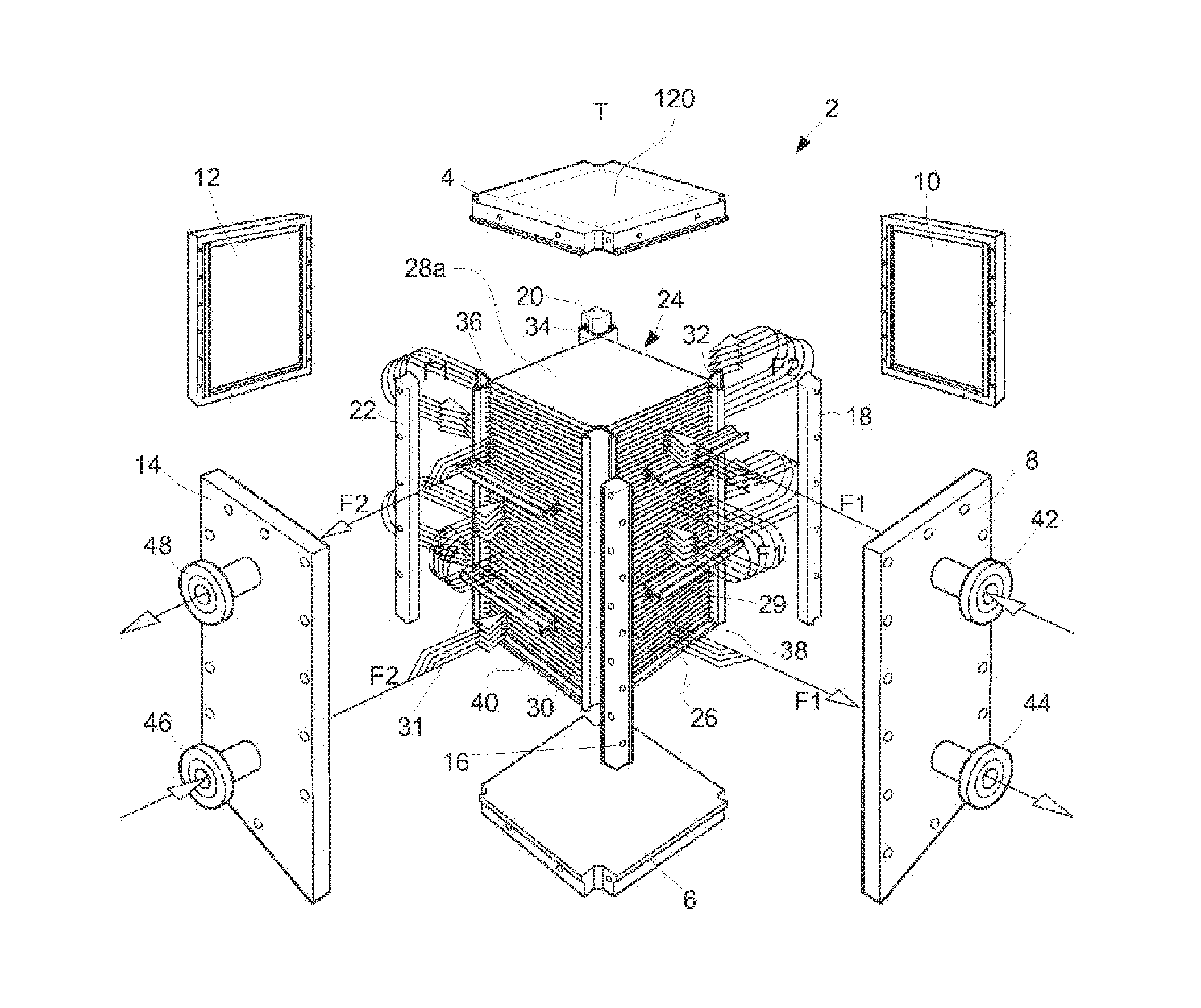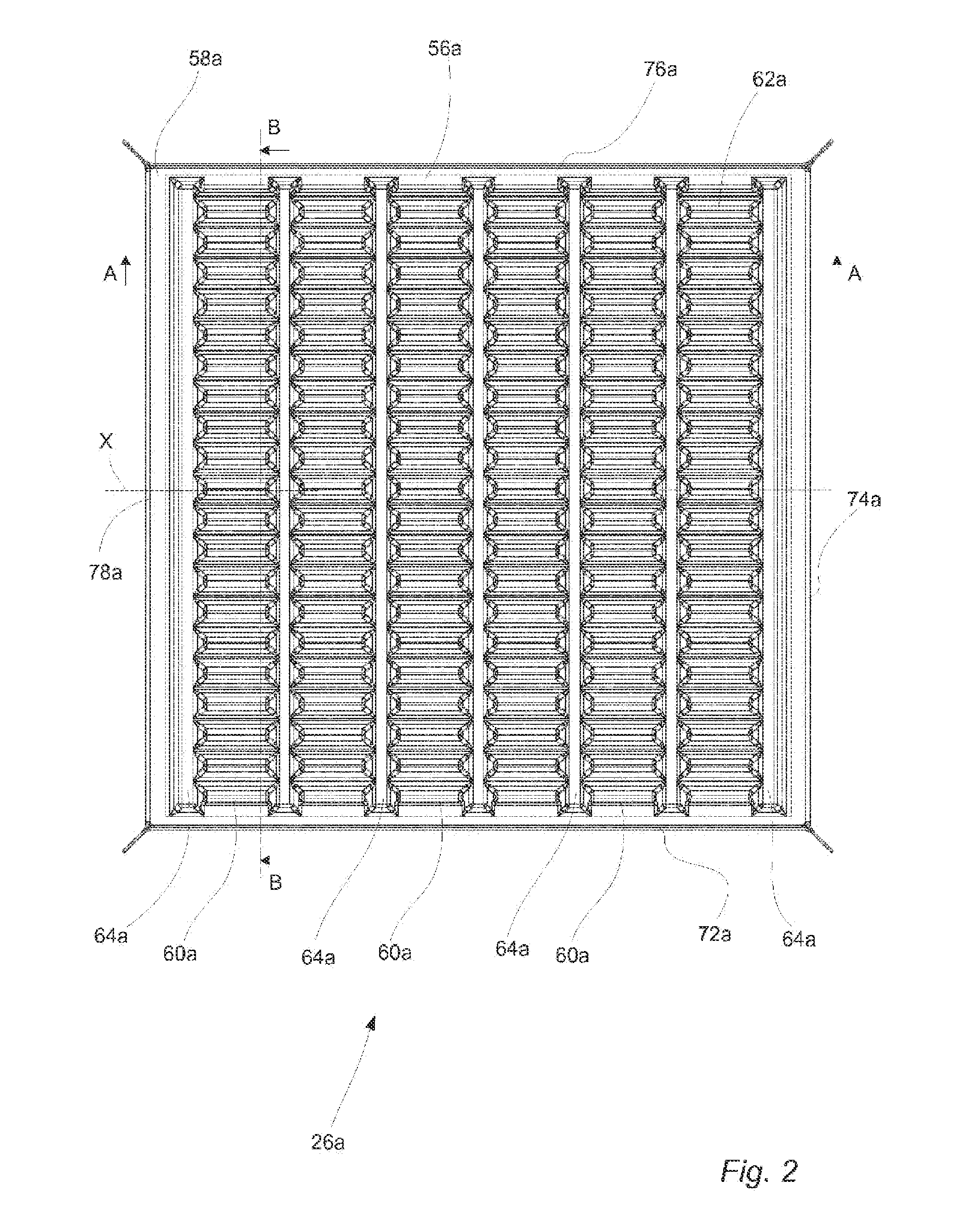Plate heat exchanger
a heat exchanger and plate technology, applied in the direction of reinforcement means, lighting and heating apparatus, laminated elements, etc., can solve the problems and reducing the efficiency of the plate heat exchanger. , to achieve the effect of reducing the stress in the reinforcement joints and facilitating bonding
- Summary
- Abstract
- Description
- Claims
- Application Information
AI Technical Summary
Benefits of technology
Problems solved by technology
Method used
Image
Examples
Embodiment Construction
[0048]With reference to FIG. 1 a plate heat exchanger 2 of a block-type is shown. The plate heat exchanger 2 comprises a first frame plate or top head 4, a second frame plate or bottom head 6 and four side panels 8, 10, 12 and 14 that are bolted together with four corner girders 16, 18, 20 and 22 to form a parallelepiped shaped enclosure of the assembled plate heat exchanger 2. A stack 24 of aligned essentially rectangular heat transfer plates 26 of stainless steel and two rectangular reinforcement plates 28 of stainless steel (of which only one denoted 28a can be seen in FIG. 1) are arranged within the enclosure. The reinforcement plates 28 are aligned with the heat transfer plates 26 and attached to a respective end of the stack 24. Conventional baffles 29 and 31 are connected to sides of the stack 24 of heat transfer plates 26. The heat transfer plates, reinforcement plates and baffles will be further discussed below.
[0049]Four side linings 30, 32, 34 and 36 arranged to face a re...
PUM
 Login to View More
Login to View More Abstract
Description
Claims
Application Information
 Login to View More
Login to View More - R&D
- Intellectual Property
- Life Sciences
- Materials
- Tech Scout
- Unparalleled Data Quality
- Higher Quality Content
- 60% Fewer Hallucinations
Browse by: Latest US Patents, China's latest patents, Technical Efficacy Thesaurus, Application Domain, Technology Topic, Popular Technical Reports.
© 2025 PatSnap. All rights reserved.Legal|Privacy policy|Modern Slavery Act Transparency Statement|Sitemap|About US| Contact US: help@patsnap.com



